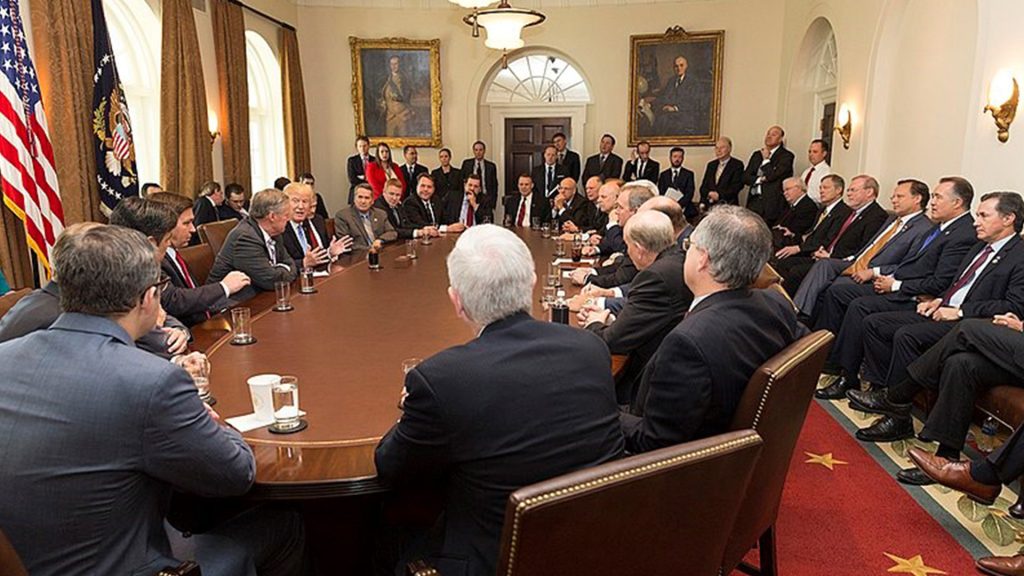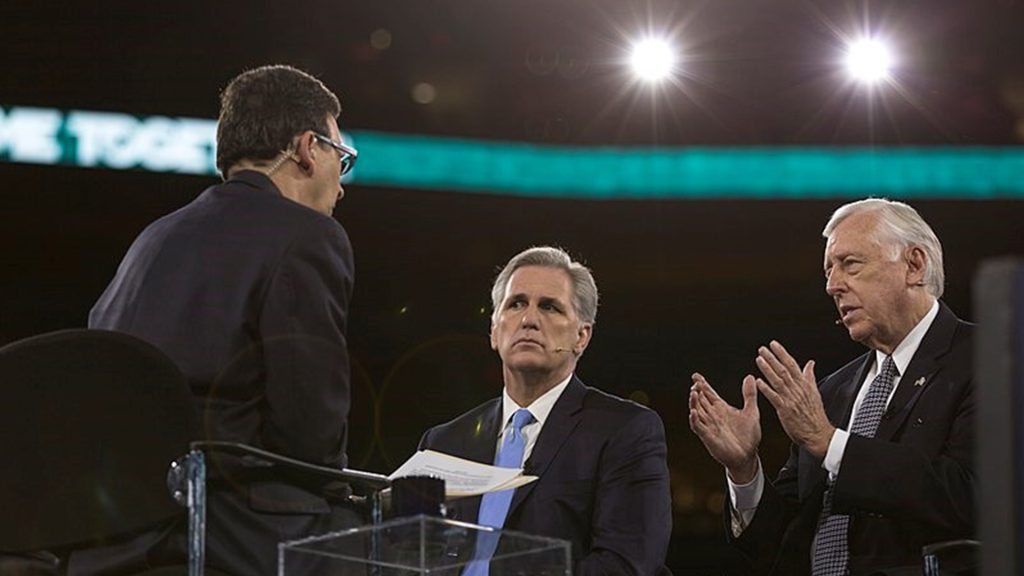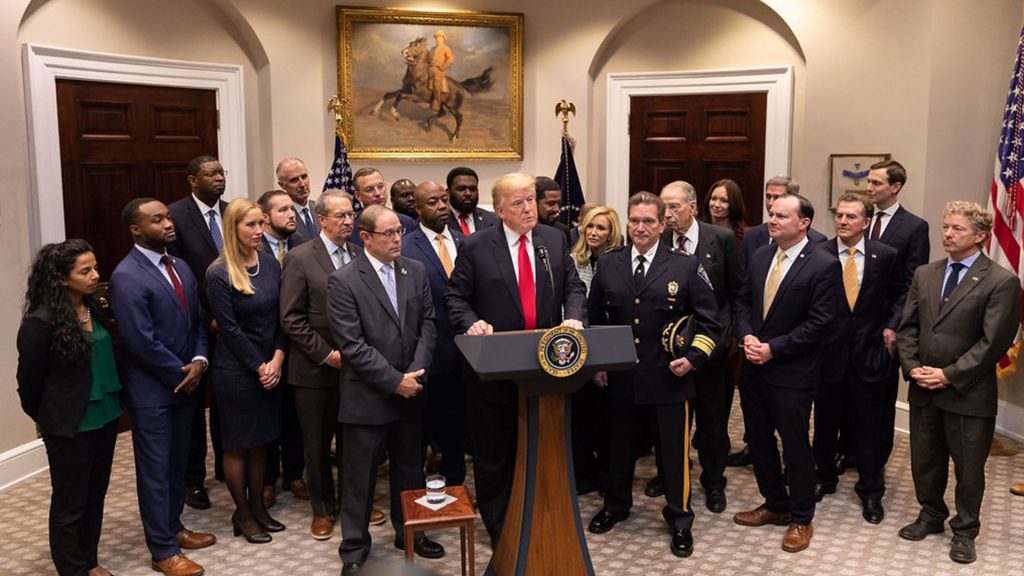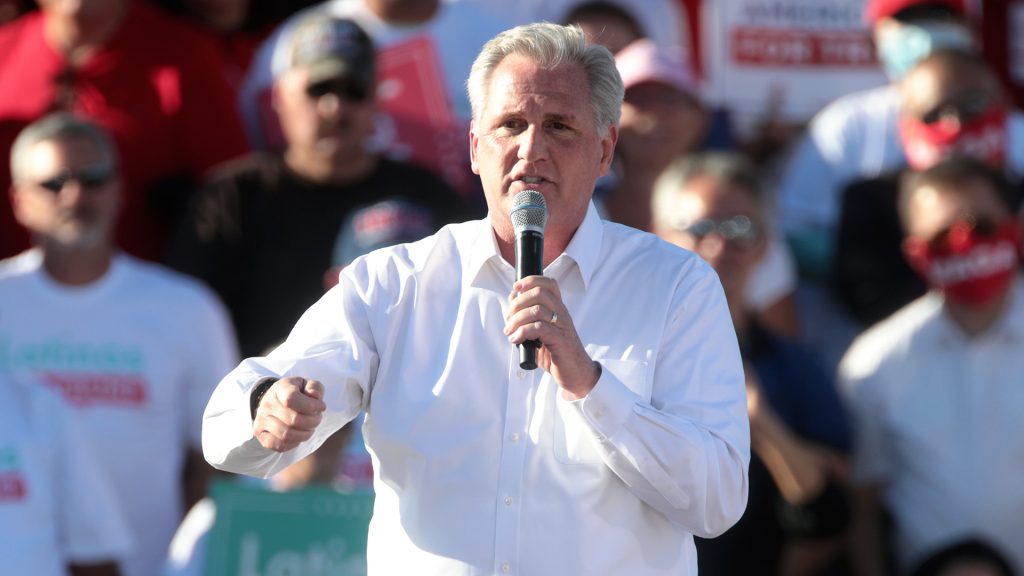The lightning-rod congresswoman from Georgia, Marjorie Taylor Greene, has had an uneasy alliance with the House Freedom Caucus since joining their ranks earlier this year. Despite sharing some ideological views, Greene’s inflammatory rhetoric and embrace of conspiracy theories have created tensions within the group.
Her recent comments comparing mask and vaccine mandates to the Holocaust prompted the Caucus to issue a rare rebuke of one of their own. However, Greene remains a prominent voice in the Caucus and the wider conservative movement. Her future role in the group highlights the challenge of balancing a big-tent approach while maintaining credibility.
The Origins of the House Freedom Caucus
The House Freedom Caucus was founded in 2015 by conservative Republican members of Congress seeking to push their party further to the right. The group organized in opposition to then-Speaker John Boehner, who they viewed as too moderate and willing to compromise with Democrats.

The Caucus is known for its ideological rigidity and willingness to vote against legislation that does not perfectly match its conservative principles. The group has no public membership roster or bylaws. Rep. Ralph Norman of South Carolina, a caucus member, said, “The reasons we do what we do are private; the meetings are private, and the members are private.”
Ruffling Feathers with The Leaders is Not New
The Caucus has had an uneasy relationship with party leadership. It has, at times, worked with leaders like former President Trump but also clashed over legislation like budget deals that did not cut spending enough for their liking.

The influence and cohesion of the House Freedom Caucus is uncertain with Trump out of office. Some members have closely aligned themselves with Trump and promoted his agenda, while others are seeking to move the party in a new direction post-Trump.
Marjorie Taylor Greene’s Rapid Rise and Alliance with the Caucus
Marjorie Taylor Greene’s rapid rise in Congress and alliance with the House Freedom Caucus illustrates the complex dynamics within the Republican party. Greene, a freshman representative from Georgia, joined the Freedom Caucus soon after taking office in 2021.

However, Greene’s relationship with the Freedom Caucus grew strained over time. In March 2022, Greene and Boebert reportedly allegedly engaged in a heated argument at a Freedom Caucus board meeting, with Greene angry that Boebert had not defended her for speaking at a conference affiliated with polarizing figure, Nicholas Fuentes.
Post-Trump Feud Era
The feud highlighted the Freedom Caucus’s struggle to define itself in the post-Trump era. Though the group was instrumental in John Boehner’s ouster as Speaker and Paul Ryan’s ascent in 2015, it has lacked direction since Trump left office. The “MAGA Squad” hoped to fill that void but soon splintered.

Though estranged from the Freedom Caucus, Greene’s influence within the Republican conference seems unlikely to wane. House Minority Leader Kevin McCarthy named her one of the lead negotiators on the annual defense bill, signaling her growing sway.
Greene’s Falling Out with Fellow ‘MAGA Squad’ Members
Marjorie Taylor Greene’s relationship with the House Freedom Caucus has become strained in recent months. The controversial congresswoman from Georgia initially allied herself with the Caucus after being elected in 2021, forming close ties with Reps. Matt Gaetz of Florida and Lauren Boebert of Colorado.

However, Greene’s alliance with House Minority Leader Kevin McCarthy and opposition to some Freedom Caucus priorities created friction. According to reports, Greene and Boebert engaged in a heated argument during a March 2022 Freedom Caucus board meeting.
Verbal Fight with Lauren Boebert Was “Final Straw“
The verbal altercation between Marjorie Taylor Greene and Lauren Boebert proved to be the final straw for the House Freedom Caucus. The group voted to remove Greene from their ranks shortly after the two congresswomen got into a heated exchange on the House floor.

According to Rep. Andy Harris (R-Md.), a member of the House Freedom Caucus board, Greene referred to Boebert using derogatory language during their argument. “I think the way she referred to a fellow member was probably not the way we expect our members to refer to other fellow, especially female, members,” Harris said.
Greene’s Support for Debt Deal and McCarthy Factored In
The House Freedom Caucus’ decision to remove Marjorie Taylor Greene from their ranks was months in the making. Her unwavering support for House Minority Leader Kevin McCarthy and his deal to raise the debt ceiling with President Biden had angered many in the conservative group.

According to Representative Andy Harris, a member of the Freedom Caucus’ board, Greene’s verbal attack on fellow Republican Lauren Boebert was “the straw that broke the camel’s back.” During a heated exchange on the House floor, Greene reportedly called Boebert a “little b—h.”
Greene Voted Out of the House Freedom Caucus
The House Freedom Caucus voted to remove Representative Marjorie Taylor Greene (R-GA) from their ranks due to diverging views and allegiances. According to multiple sources, the far-right group formally ejected Greene just before the July Fourth congressional recess.

The House Freedom Caucus voted to remove Representative Marjorie Taylor Greene (R-GA) from their ranks due to diverging views and allegiances. According to multiple sources, the far-right group formally ejected Greene just before the July Fourth congressional recess.
A Secret Vote and Lingering Questions
Tensions came to a head in June 2022 when the Freedom Caucus apparently held a secret vote to remove Greene from their ranks. Though nothing was announced publicly, Greene claimed she had received no communication from the group for weeks.

Other members suspected she was avoiding them. For her part, Greene said she was “interested in getting accomplishments done, not doing things just to disrupt and fight leadership.” The circumstances surrounding Greene’s apparent ousting remain mysterious.
A Crossroads and a Purge
The House Freedom Caucus is grappling with its identity in a post-Trump era. Some members fret the group risks becoming too cozy with the Republican establishment. Removing Greene is a sign the Caucus wants to maintain its rebellious reputation.

With Greene now out of the fold, the House Freedom Caucus can refocus on its push for lower government spending and holding the line against compromises in negotiations with Democrats. Though largely united, members have debated the best approach to achieve their goals. As Harris put it, removing Greene may help the group overcome “large divisions” and present a unified front.
There is a First Time for Everything
The House Freedom Caucus has never before voted to remove one of its members. Greene recently frustrated many in the group with her close alliance with House Minority Leader Kevin McCarthy. While the Caucus largely agrees on reducing government spending, they disagree on strategy.

Greene supported McCarthy during his bid for House Speaker and voted for a debt deal with President Biden, going against the positions of many Freedom Caucus members. The argument with Boebert appears to have been the last straw. “The straw that broke the camel’s back was publicly saying things about another member in terms that no one should” stated Harris.
A Warning Shot to Other Wayward Members
Voting Greene out of the Freedom Caucus was meant to warn other wayward members. There have been discussions about targeting additional representatives seen as inactive or violating the group’s standards. Caucus chair Scott Perry previously denied requests to purge other members, but Greene’s case clarified that dissent would not be tolerated.

The Freedom Caucus faces many challenges, including disagreements over strategy and alliances that could weaken their cause. By banishing Marjorie Taylor Greene, they aimed to eliminate a source of internal strife and present a united front.
Divisions Remain Within House Freedom Caucus
The vote to remove Rep. Marjorie Taylor Greene from the House Freedom Caucus showed the remaining divisions within the group. While the Caucus is largely unified in wanting to reduce government spending, they don’t always agree on the best strategy to achieve their goals.

The divisions within the Freedom Caucus go beyond just personality clashes, however. The group struggled to reach the 80% consensus needed to take a unified stance on major issues like the Speakership race and raising the debt ceiling.
Enough Was Enough
And with that, Marjorie Taylor Greene was out. After a few tumultuous months in office, the conspiracy theorist congresswoman finally went too far for even her own party’s most extreme members. Her inflammatory and offensive comments were damaging the Republican brand and hindering their ability to appeal to moderate voters.

While Greene cried foul and claimed her freedom of speech was under attack, the truth was her reckless behavior and refusal to be a team player led to her expulsion. The House Freedom Caucus decided they had given Greene enough chances, and her extremism was no longer welcome.
What Greene’s Ejection Means for the Future of the Freedom Caucus
Both sides seem eager to move past this conflict, but Greene’s influence is unlikely to wane. Her ejection may strengthen her position. House Minority Leader Kevin McCarthy named Greene as one of the chief negotiators for the House on the annual defense spending bill, demonstrating her rising clout.

Meanwhile, the Freedom Caucus must determine its path forward without one of its most prominent members. Greene’s departure highlights the group’s ongoing struggle to define its identity and purpose in the post-Trump era.






